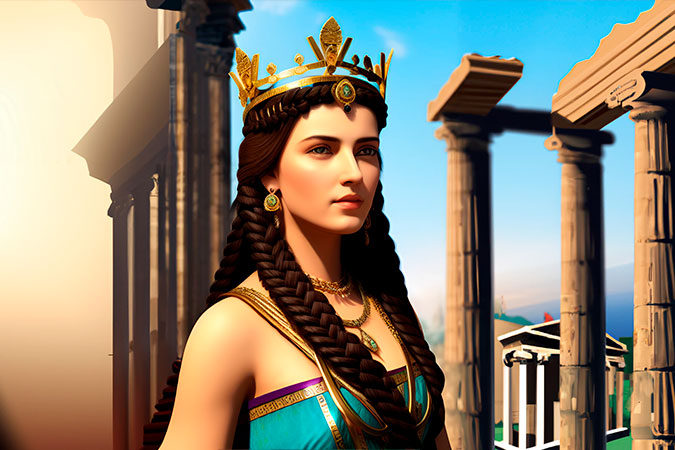Greek Influence on Cosmetology: Hairstyling, Perfumes, and Cosmetics
This extensive article discusses the significant influence of ancient Greece on the field of cosmetology. It highlights how hairstyling became an intricate art form during Greece’s Golden Age, around 500 BCE, with popular styles such as crown braids and chignons, as evidenced in early Greek sculptures. These styles not only served aesthetic purposes but also conveyed status and identity. The article further explores the Greeks’ extensive use of perfumes and cosmetics, both in personal grooming and religious rites. The article explains how Greek women used white lead preparations for a pale facial complexion, kohl for eye enhancement, and vermillion, a bright red pigment derived from crushed cinnabar, for their cheeks and lips. The article concludes by appreciating the enduring impact of these ancient Greek practices on contemporary cosmetology.

Hairstyling, Perfumes, and Cosmetics
The history of cosmetology is replete with fascinating stories of innovation and cultural traditions, and the ancient Greeks have undoubtedly left an indelible mark on this field. During the Golden Age of Greece, around 500 BCE, the Greeks developed and popularized several beauty practices that continue to shape our understanding of personal aesthetics today.
Hairstyling in Ancient Greece
One of the most distinctive aspects of ancient Greek beauty practices was hairstyling, which became a highly developed art during this period. Early Greek sculptures often depict subjects with intricate hairstyles, including crown braids and chignons. These styles were not only aesthetically pleasing but also signified one’s status and identity in society.
Crown braids, typically made by plaiting or twisting strands of hair around the head, were commonly seen in depictions of Greek goddesses, indicating their divine status. Chignons, which involve twisting or knotting the hair at the back of the head, were popular among both men and women, and their styles could vary based on the occasion or social status.
The Use of Perfumes and Cosmetics
In addition to their hairstyling practices, the ancient Greeks were also known for their extensive use of perfumes and cosmetics. These were not just used for personal grooming but also held significant roles in their religious rites and medicinal practices.
Greek women, in particular, took great care in their personal appearance and used various cosmetics to enhance their beauty. They applied white lead preparations to their face to achieve a pale complexion, which was considered desirable at the time. Around their eyes, they applied kohl, similar to the Egyptians, for an intensified look and to protect the eyes.
The Greeks also used vermillion, a bright red color made from crushed cinnabar, on their cheeks and lips. This vibrant red pigment, used as a blush and lipstick, added a touch of color and drama to their appearance.
Conclusion
The ancient Greeks were pioneers in many fields, and cosmetology was no exception. Their innovative hairstyles, like crown braids and chignons, continue to be popular to this day. Moreover, their use of perfumes and cosmetics not only for personal grooming but also in religious rites and medicinal practices underscore the cultural significance of these beauty practices. Their contributions to cosmetology continue to influence our beauty and grooming practices, and their legacy lives on in the modern beauty industry.






